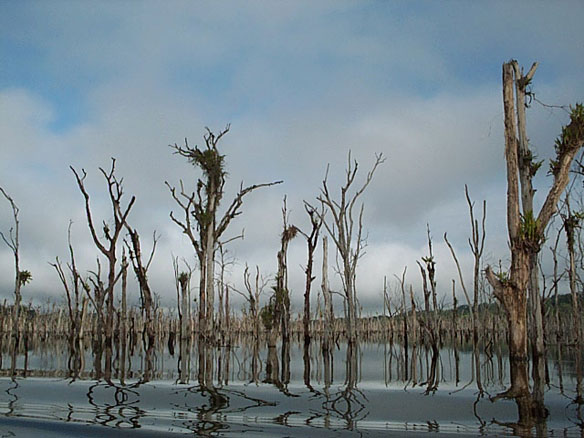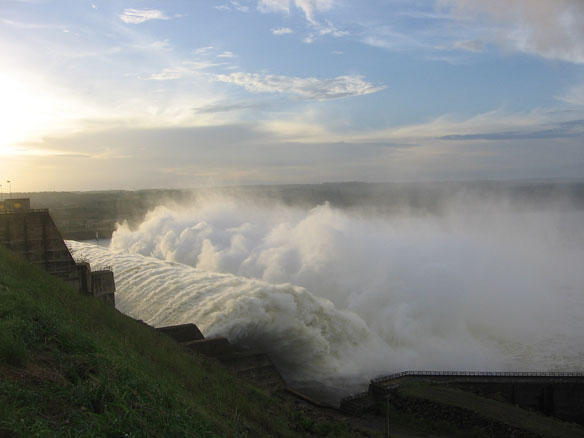
Dire Consequences of Dam Reservoir Emissions, Petit Saut Reservoir, French Guiana. A growing number of scientific studies indicate that reservoirs, especially in the tropics, are a significant source of global greenhouse gas pollution. The “fuel” for these emissions is the rotting of organic matter from the vegetation and soils flooded when the reservoir is first filled. The carbon in the plankton and plants that live and die in the reservoir, the detritus washed down from the watershed above, and the seasonal flooding of plants along the reservoir fringes, ensure that emissions continue for the lifetime of the reservoir. Captions and Photo source: ©© Frédéric Guérin / International Rivers
Excerpts;
With the “green” reputation of large hydroelectric dams already in question, scientists are reporting that millions of smaller dams on rivers around the world make an important contribution to the greenhouse gases linked to global climate change. Their study, showing that more methane than previously believed bubbles out of the water behind small dams, appears in ACS’ journal Environmental Science & Technology…
Andreas Maeck and colleagues point out that the large reservoirs of water behind the world’s 50,000 large dams are a known source of methane. Like carbon dioxide, methane is one of the greenhouse gases, which trap heat near Earth’s surface and contribute to global warming. Methane, however, has a warming effect 25 times more powerful than carbon dioxide. The methane comes from organic matter in the sediments that accumulate behind dams. That knowledge led to questions about hydroelectric power’s image as a green and nonpolluting energy source. Maeck’s team decided to take a look at methane releases from the water impoundments behind smaller dams that store water less than 50 feet deep…
Read Full Article, Science Daily
New Global Warming Culprit: Dams, Science Daily (Uploaded 08-08-2012)
Washington State University researchers have documented an underappreciated suite of players in global warming: dams, the water reservoirs behind them, and surges of greenhouse gases as water levels go up and down.
Small Dams On Chinese River Harm Environment More Than Expected, study finds, NSF
A fresh look at the environmental impacts of dams on an ecologically diverse and partially protected river in China found that small dams can pose a greater threat to ecosystems and natural landscapes than large dams.

Tucuruí Dam spillway, Tocantins River, Brazil (Eneida Castro). Brazilian researchers estimated in 2007 that methane from dams is responsible for around 4% of human-caused global warming. Greenhouse gases, primarily methane (CH4) and carbon dioxide (CO2), are emitted from the surface of the reservoir, at turbines and spillways, and for tens of kilometers downstream. Emissions are highest in hot climates. Captions and Photo source: ©© International Rivers








